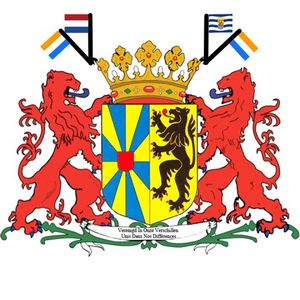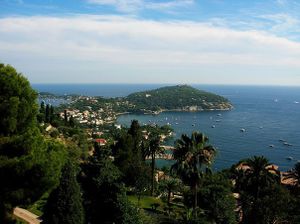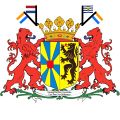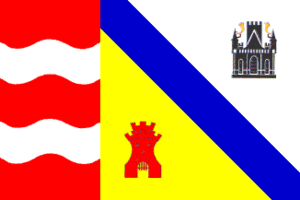Republic of Zeeland
This article refers to a micronation or element of micronationalism which is defunct and no longer exists. You can help make the article reflect that or ask on the talk page for further information. |
Republic of Zeeland-Belgie | |
|---|---|
| Motto: United In Our Differences | |
| Anthem: Power to the People | |
| File:Zeelandic Flanders, claimed by the Netherlands | |
| Capital and largest city | Terneuzen |
| Official languages | Dutch, Zeelandic, Flemish, French |
| Demonym(s) | Zeeland-Belgican, South Zeelander |
| Government | Unitary Parliamentary Republic |
• Prime Minister | Henry K. Weiss |
• Prime Minister | Henry K. Weiss |
| Legislature | Provincial Council |
| Establishment | April 13th, 2010 |
| Population | |
• Census | 107,600 |
| Currency | Euro |

The Republic of Zeeland-Belgie, also known as Zeeland-Belgie or just Zeeland, was a Dutch micronation located in the southern part of the Dutch Province Zeeland. It had ten provinces and one protectorate, the Principality of Saint-Jean which is located on the Mediterranean, near Monaco and bordering only France. It was a Unitary Parliamentary Republic with it's capital and seat of government located in the largest city of Terneuzen. It lies in the transition waters between the North Sea and the English Channel. It was bordered only by Belgium but less than a mile across of the Western Scheldt, a North Sea estuary is the Netherlands. It claimed the island of Sint Eustatius which is known as Statia locally and commonly in the country and is a full province of Zeeland-Belgie.
Its currency was the Euro and it accepts immigrants from many countries because of it's liberal immigration laws. It is now the Republic of Bethania.
Etymology
Zeeland-Belgie translates as Zéland-Belgia which means Belgian Zeeland in Zeelandic Creole. The country is called the Republic of Zeeland-Belgie because it is a Unitary Republic (it were not unitary, it would be the Federal Republic of). Since the Netherlands claims the country to be the region of Zeelandic Flanders, Zeelandic Flanders is a common name for the country in English. South Zeeland, South Netherland, North Belgium, North Flanders and Dutch Belgium are other common names.
Symbols



The Flag of Zeeland-Belgie consists of ten bands alternating in color from Blue, White and Orange respectively and a canton. Inside the canton are five coats of arms, the coat of arms of the Netherlands, a simplified version of the coat of arms of the province of Zeeland, the coat of arms of Belgium, the coat of arms of the old Dutch Republic and the coat of arms of the country.
The coat of arms of the country is basically the coat of arms of Zeeland crossed with the shield of Belgian West Flanders. It also has the flags of the Dutch Republic, the Netherlands and Zeeland coming off of it.
History
Most of Zeeland-Belgie was not part of the historical County of Zeeland, unlike the rest of Zeeland under the Holy Roman Empire. It was part of the County of Flanders which was initially ruled by the Austrian Habsburg. The region was the front line in the Dutch War of Independence (Eighty Years War) against Spain. It was part of the first Dutch Republic, conquered by the Republic near the end of the war. After the Belgian War of Independence from the new United Kingdom of the Netherlands, Zeelandic Flanders chose to remain part of the Netherlands. Independence was declared on April 13, 2010 because of the unique culture that mixes Dutch, Belgian, British and French origins.
Government
Zeeland-Belgie is a Unitary Parliamentary Republic which means that even though it has six provinces, they are all governed directly by the national government. It has a parliament and the head of state is the Prime Minister who serves a maximum of three consecutive three-year terms and is elected directly by the people. There are four branches of the government, the Legislative, which is made up of the Provincial Council in which two representatives from each province which is presided over by the Chairman of the Provincial Council who serves a maximum of two five year terms and is elected directly by the people, and the Judicial which is presided over by three Head Judges who are elected by the people and can serve a unlimited number of four year terms.
Below are the ministers in the Zeeland-Belgican parliament and their jobs.
Prime Minister - Head of state, speaker of the people and symbol of the country on an international level.
Vice Executive - Chief advisor to the Prime Minister and first substitute should the Prime Minister be unable to carry out their duties.
Minister of Finance - Economic adivsor to the Prime Minister.
Minister of Defense - Military and Defense advisor to the Prime Minister.
Chief Attorney - Law advisor to the Prime Minister and lawyer to the Republic of Zeeland-Belgie in any scenario.
Minister of the Interior - Advisor to the Prime Minister on the state of the nation's people and Homeland Security.
Minister of Commerce - Speaker for the commercial industry of the nation.
Minister of Labor - Speaker for the working class citizens and worker unions of the nation.
Minister of Human Services - Advisor to the Prime Minister about health hazards to the nation and public human services such as public health care and police and fire services.
Minister of Housing - Speaker of all peoples living in territory in the country and advisor to the Prime Minister for citizens of the country who have problems with housing or are homeless.
Minister of Energy - Advisor to the Prime Minister on all energy issues in the country.
Minister of Education - Advisor to the Prime Minister on any education issues.
Minister of the Environment - Advisor to the Prime Minister on any environmental issues.
Administrative Divisions

Zeeland-Belgie is a unitary republic, which means that the province you live in is nothing more than a postal address and the different provinces are no more than a means to better locate things on a map. The ten provinces of Axel, Fair Isle, Honte-Nisse, Hulst-Sint Jansteen, Jan Mayen, Oostburg, Sas Van Gent, Sluis-Aardenburg, Statia and Turneuzen are further divided into municipalities which have mayors, while the provinces are represented (although no provincial issues are discussed in the assembly) in the Provincial Council.
The Provinces
Saint-Jean


The Principality of Principality of Saint-Jean located near Monaco and claimed by France is a protectorate of Zeeland-Belgie and is a de facto independent state with the exception of not having any foreign relations than those with Zeeland-Belgie. It's capital which encompasses the entire principality is Saint-Jean-Cap-Ferrat. It is on a peninsula which stretches out into the Mediterranean Sea and has a government almost identical to that of Monaco. It's current monarch is Prince Emmett I.
Holidays
In Zeeland-Belgie, a holiday, officially called a Public Holiday is a day that people are not required to work and schools are closed.
January 1 - New Year's Day
February 14 - Valentine's Day
March 8 - International Women's Day
April 13 - Independence Day
April 22 - Earth Day
May 1 - Worker's Day
May 9 - Europe Day
August 26 - Mother Teresa Day
November 4 - Obama Day
December 24 - Christmas Eve
December 25 - Christmas Day
April/March Friday before Easter - Good Friday
May 5 - Liberation Day
Education
The Republic of Zeeland-Belgie offers public education paid for by tax dollars. Since the country is so small, there is one school schedule and one set of courses. Children are required to go to school from the age of four to eighteen and are required to go to school from six to eighteen. Public colleges are also available. School years go from September 7 to June 3.
Foreign relations
Zeeland-Belgie recognizes all members of the United Nations including observer nations except the People's Republic of China, the Union of Myanmar and Sudan. It also recognizes several separatist movements, including Somaliland, Nagorno-Karabakh, Transnistria, Abkhazia, Taiwan, Kosovo, the Gaza Strip, Western Sahara, South Ossetia. It also does not recognize the Draco Republic or the Socialist Autonom Republic of Atlantis.
The Republic has de facto mutual recognition treaties with the nations below.
For a request of mutual recognition or any other messages from foreign powers, please leave a message on contact Hekewe's talk page.











